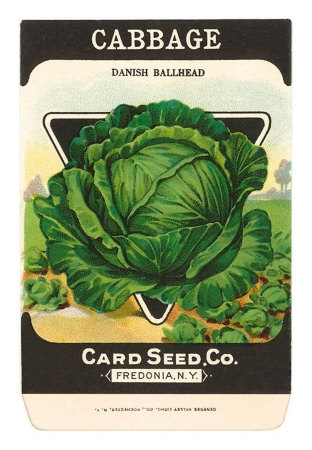Those lazy, crazy, foggy days of summer are behind us now. What a strange summer it was. Checking my un-scientific weather records I’ve kept since 1999, I find no other summer that was as cool at this one. This comes as no surprise to you tomato growers out there, I know. At the other end of the spectrum, a few years, like the summer of 2006 and 2008 were real scorchers. We’re all looking forward to Indian summer which is the best planting season of the year.
There is plenty of time to plant California natives, Mediterranean plants or any other perennial, shrub, grass or tree. By r, roots have a chance to grow all autumn and most of the winter as well without having to supply nourishment to the leafy portion of the plant. Roots of deciduous plants still grow even after plants drop their foliage as long as the ground temperature is above 50 degrees. Cooler day and night temperatures slowly harden off the top of the plant to prepare for the cold days of winter.
Another reason that fall is the no-fail planting season is because plants put in the ground in fall need less water to establish. Plants themselves use less water since photosynthesis is slowed by shorter days even if it’s occasionally hot. Evaporation rates slow down also during fall so water in the soil lasts longer as well. Sometimes we get lucky with fall and winter rains perfectly spaced so the ground never completely dries out.
Even cool season annuals such as snapdragons, pansies and violas, Iceland poppies and primrose planted in early fall have time to develop better roots before flowering and because they start blooming earlier they bloom over a longer time.
So get out the shovel, prepare you soil and make a shopping list.
Plants that thrive in dry, shady spots benefit especially from fall planting as they need established root systems before next years dry season. Dry shade sometimes occurs in places beyond the reach of the hose but also under native oaks. To protect their health, it’s a requirement that plants underneath thrive with little or no summer irrigation.
Plants of proven success under these conditions include native currants and gooseberry. Claremont pink flowering currant ( Ribes sanguineum var. glutinosum) are beautiful in spring with pale pink flower clusters that darken as they age. The powdered, blue-bla.jpg) ck berries are edible although the seeds are bitter. To get a taste of the fruit, though, you’ll have to compete with the birds. Chapparal currant is another tough reliable shrub that blooms early and often, flowering from December through March. The pendulous flower clusters are 2-6 inches long and range in color from dusty pink to rose red.
ck berries are edible although the seeds are bitter. To get a taste of the fruit, though, you’ll have to compete with the birds. Chapparal currant is another tough reliable shrub that blooms early and often, flowering from December through March. The pendulous flower clusters are 2-6 inches long and range in color from dusty pink to rose red.
Other winning shrubs for dry shade include mahonia, nandina, osmanthus, snowberry, coffeeberry, aucuba, barberry and upright manzanita.
Groundcovers that thrive under oaks or other dry shady spots include hellebore, evergreen currant, correa, manzanita and sarcoccoca.
Whatever conditions you have in your garden, don’t miss out adding some great plants during the fabulous fall planting season.

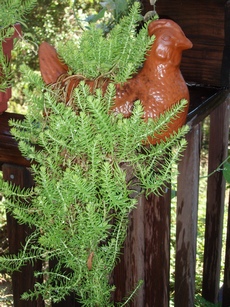 ost sophisticated of all hardy container designs is to plant a skim of sedum across the surface of a shallow container. There are so many to choose from Then leave it alone to grow and drip down the sides.
ost sophisticated of all hardy container designs is to plant a skim of sedum across the surface of a shallow container. There are so many to choose from Then leave it alone to grow and drip down the sides.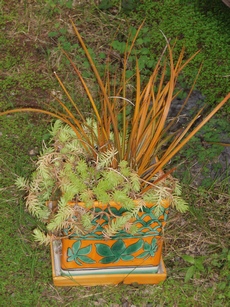
.jpg) l centers. This series also comes in bicolor rose and lavender shades which are equally showy. They really light up the shade garden.
l centers. This series also comes in bicolor rose and lavender shades which are equally showy. They really light up the shade garden.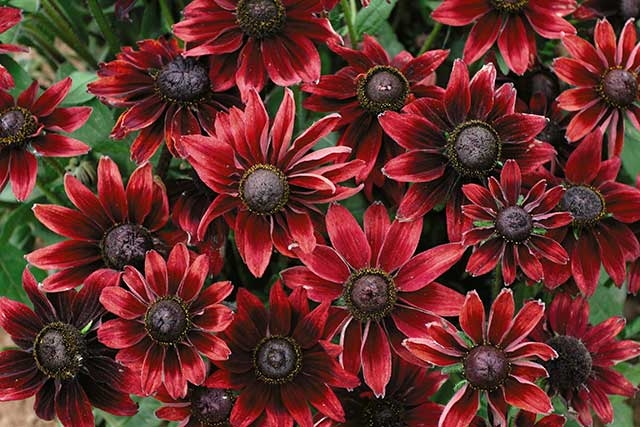
 voice is coming from. Deciding she wants no more of the talking fuchsia she rambles on followed by her little one.
voice is coming from. Deciding she wants no more of the talking fuchsia she rambles on followed by her little one. 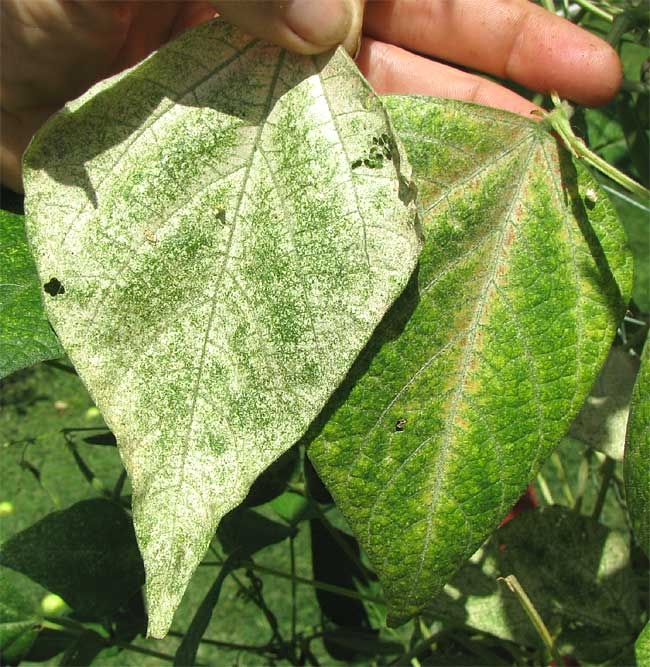 thrive during dry weather and their populations can get out of hand by August.
thrive during dry weather and their populations can get out of hand by August.